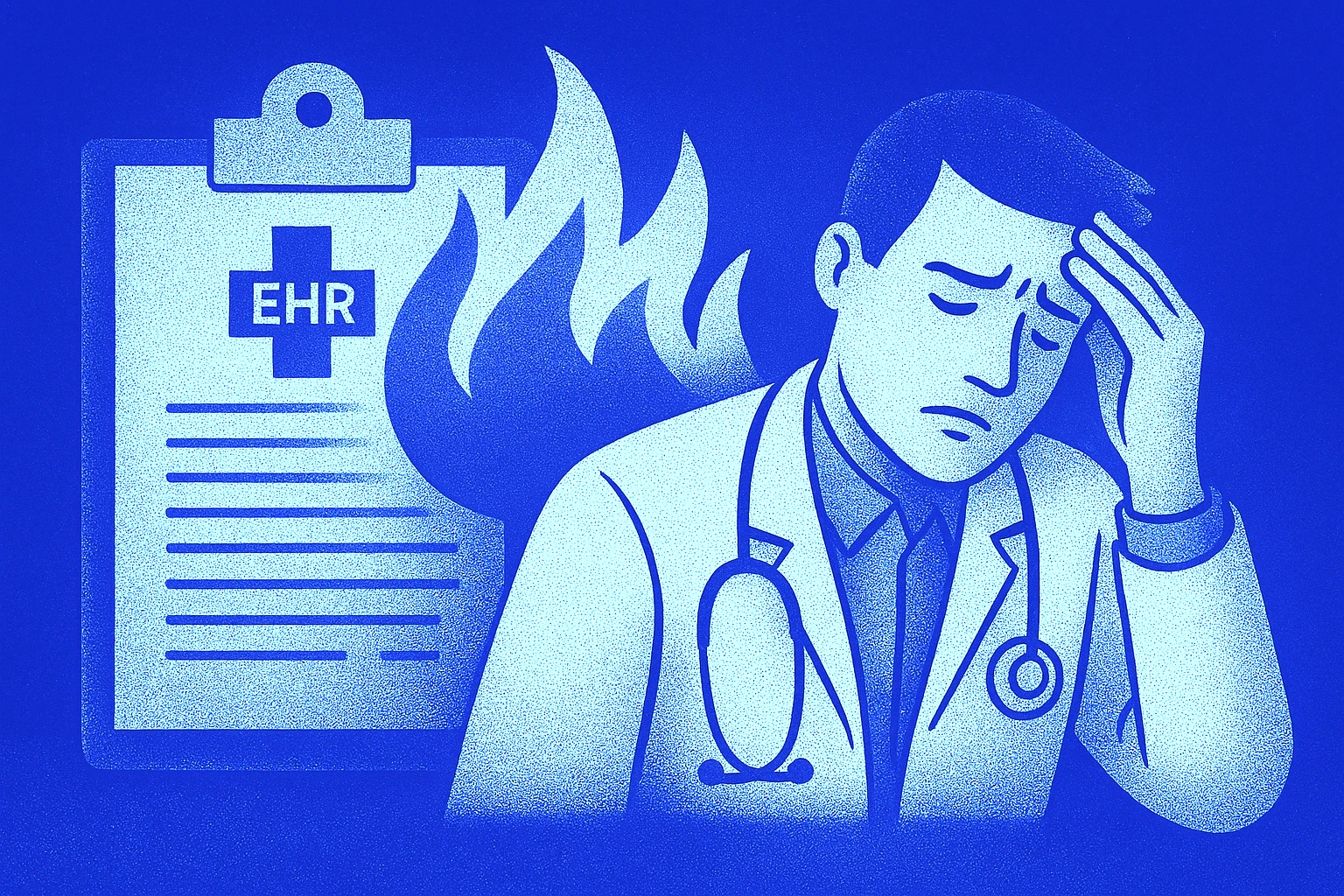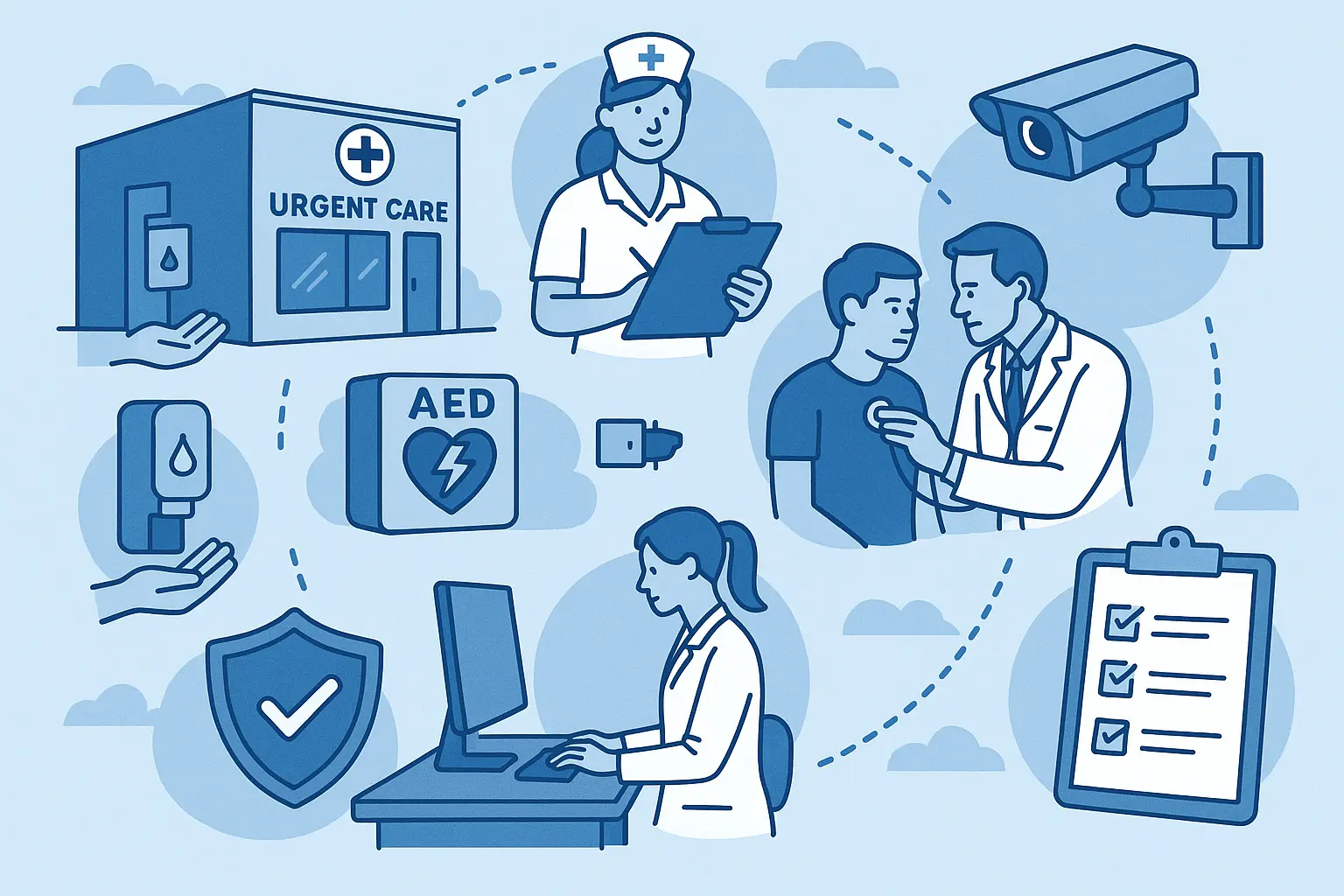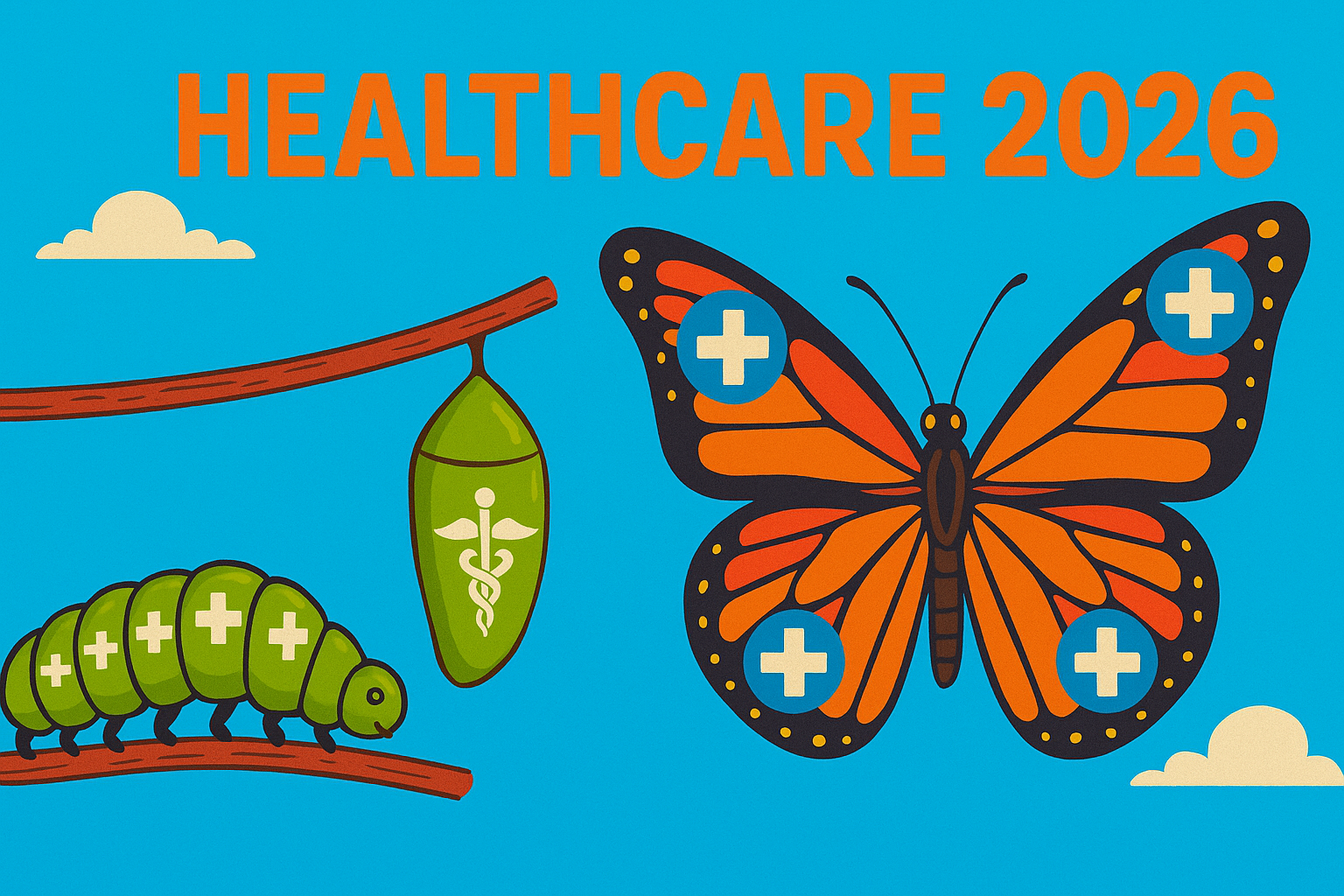

Combat Provider Burnout By Changing EHR
The right EHR system reduces burnout by streamlining workflows and restoring work-life balance.

Do the providers in your urgent care frequently complain about the lack of time to properly see a patient?
Are they often behind in their documentation or chart completion?
Are you seeing where there is an increasing amount of time being spent completing documentation outside of the provider’s scheduled shift?
If any of these situations occur with your providers, there is a high risk of burnout.
Physician burnout is a growing problem in healthcare, especially in urgent care settings, where the pressure is high, and the pace is fast. The struggle to maintain work-life balance, handle administrative tasks, and deliver quality care leads to increased stress, and one major culprit stands out: the Electronic Health Record (EHR) system.
In a recent article published by Becker’s Health IT (https://www.beckershospitalreview.com/ehrs/ehr-systems-still-a-major-factor-in-clinician-burnout.html) a mere 20% of physicians felt that they had sufficient time to complete documentation. Many reported that they spend excessive time at home in an attempt to maintain documentation requirements.
While EHRs were designed to improve patient care and streamline workflows, they have become a significant source of frustration for many healthcare professionals. However, this challenge also presents an opportunity for urgent care facilities to make impactful changes. Here’s how changing your EHR can help combat physician burnout and improve your practice's overall efficiency.
1. Identifying the Problem: How EHRs Contribute to Burnout
- The adoption of EHR systems was meant to make healthcare more efficient by digitizing patient records and facilitating easy access to information. However, for many providers, EHRs have become time-consuming and cumbersome, contributing significantly to physician burnout. Some common issues include:
- Excessive Administrative Tasks: EHR systems often require providers to spend a large portion of their day on data entry, reducing the time available for patient interaction.
- User-Unfriendly Interfaces: Many EHR platforms are not intuitive and involve a steep learning curve, adding to daily stress.
- Alert Fatigue: Constant pop-up alerts, reminders, and notifications can overwhelm providers, leading to alert fatigue and reduced focus on patient care.
- Poor Customization: Generic EHR templates often don’t align with the unique workflows of urgent care facilities, making charting more tedious and time-consuming.
2. Choosing an EHR That Puts Providers First
- A user-centric EHR prioritizes the needs of healthcare professionals, making their workday smoother rather than adding to the burden. When selecting a new EHR, urgent care facilities should look for the following features:
- User-Friendly Interface: Opt for an EHR that has an intuitive layout and require minimal clicks to complete tasks. A clean and simple design can reduce the cognitive load on providers and help them navigate the system more efficiently.
- Efficient Documentation Tools: An ideal EHR should include voice recognition for dictating notes, templates tailored for urgent care, and automated data entry for repeat visits. These features can significantly reduce the time spent on documentation.
- Customizable Workflows: The ability to tailor workflows and templates to the specific needs of urgent care will allow providers to chart quickly and accurately, improving both efficiency and job satisfaction.
- Smart Alerts and Notifications: Look for EHRs that prioritize clinically relevant alerts, minimizing the clutter from unnecessary reminders. Alert fatigue can be reduced by providing notifications that matter most to the clinician.
- Mobile Access: In urgent care, being able to update or review a patient’s chart from anywhere in the clinic can make a big difference. A mobile-friendly EHR enables providers to access information on the go, enhancing flexibility and productivity.
3. Implementing AI-Powered Assistance
- Artificial intelligence (AI) tools are becoming increasingly sophisticated and can be integrated into EHRs to help with various tasks, such as:
- Automating Routine Tasks: AI can assist with scheduling, billing, and even preliminary charting by pulling in relevant patient information, reducing the time physicians spend on administrative tasks.
- Clinical Decision Support: AI-driven tools can help by providing evidence-based recommendations, alerting physicians to potential drug interactions, or suggesting the next steps in patient care.
- Streamlining Prescription Processes: AI can automate refill requests and flag common prescription errors, reducing the workload on providers.
- These tools not only enhance the functionality of the EHR but also give physicians more time to focus on patient care.
4. Ensuring Proper Training and Ongoing Support
- Even the best EHR system can only be as good as the support and training behind it. Many physicians experience frustration due to inadequate training when new systems are introduced. To prevent this, urgent care centers should:
- Provide Comprehensive Training: Ensure that all staff receive thorough training on the new EHR, including practical, hands-on sessions and time to practice before going live.
- Offer Continuous Support: Access to ongoing support can help staff troubleshoot issues quickly and reduce the stress of navigating new software.
- Solicit User Feedback for Updates: Regularly collect feedback from staff to identify areas where the EHR can be improved or customized further.
5. Prioritizing Work-Life Balance
- Ultimately, an EHR system should enable a better work-life balance. Reducing time spent on documentation and improving workflow efficiency allows physicians to leave work on time and spend more quality time outside the clinic. This balance is crucial for combating burnout and maintaining a motivated and satisfied team.
Conclusion
While no EHR system is perfect, making strategic changes to your urgent care's EHR can dramatically improve the day-to-day experience for physicians. By choosing a system that is user-friendly, customizable, and equipped with advanced features like AI-powered assistance and other integrations, urgent care centers can significantly reduce the administrative burden on providers. This change, coupled with ongoing training and support, not only combats physician burnout but also enhances the quality of patient care.
Investing in the right EHR is an investment in your teams; well-being - AND that's a change worth making. For more information on how UrgentIQ can help your practice avoid provider burnout with our purpose-designed and highly intuitive EHR, contact us today at sales@urgentiq.com
More blog posts to read
Prefer to send an email? Send us your request at sales@urgentiq.com, and we'll coordinate with you directly.
We're thrilled that you're interested in joining us. Please fill out the form below to get started on your journey with UrgentIQ.




